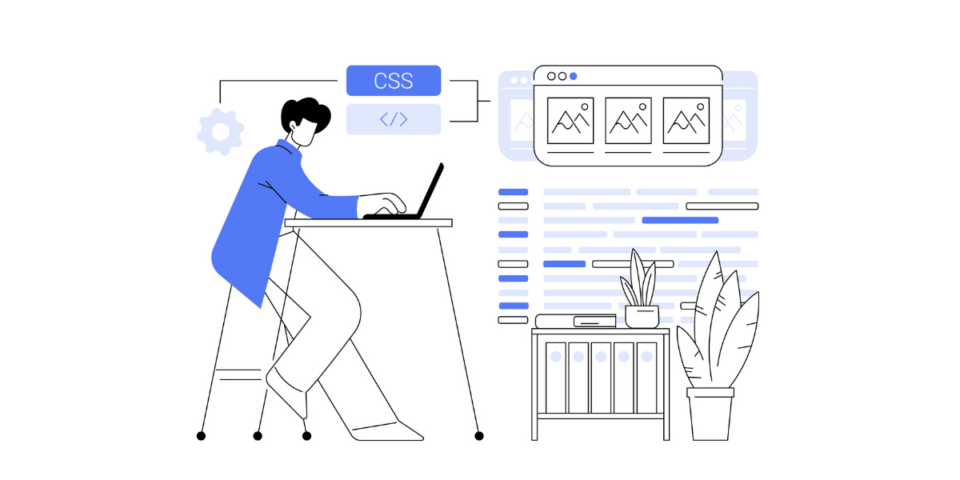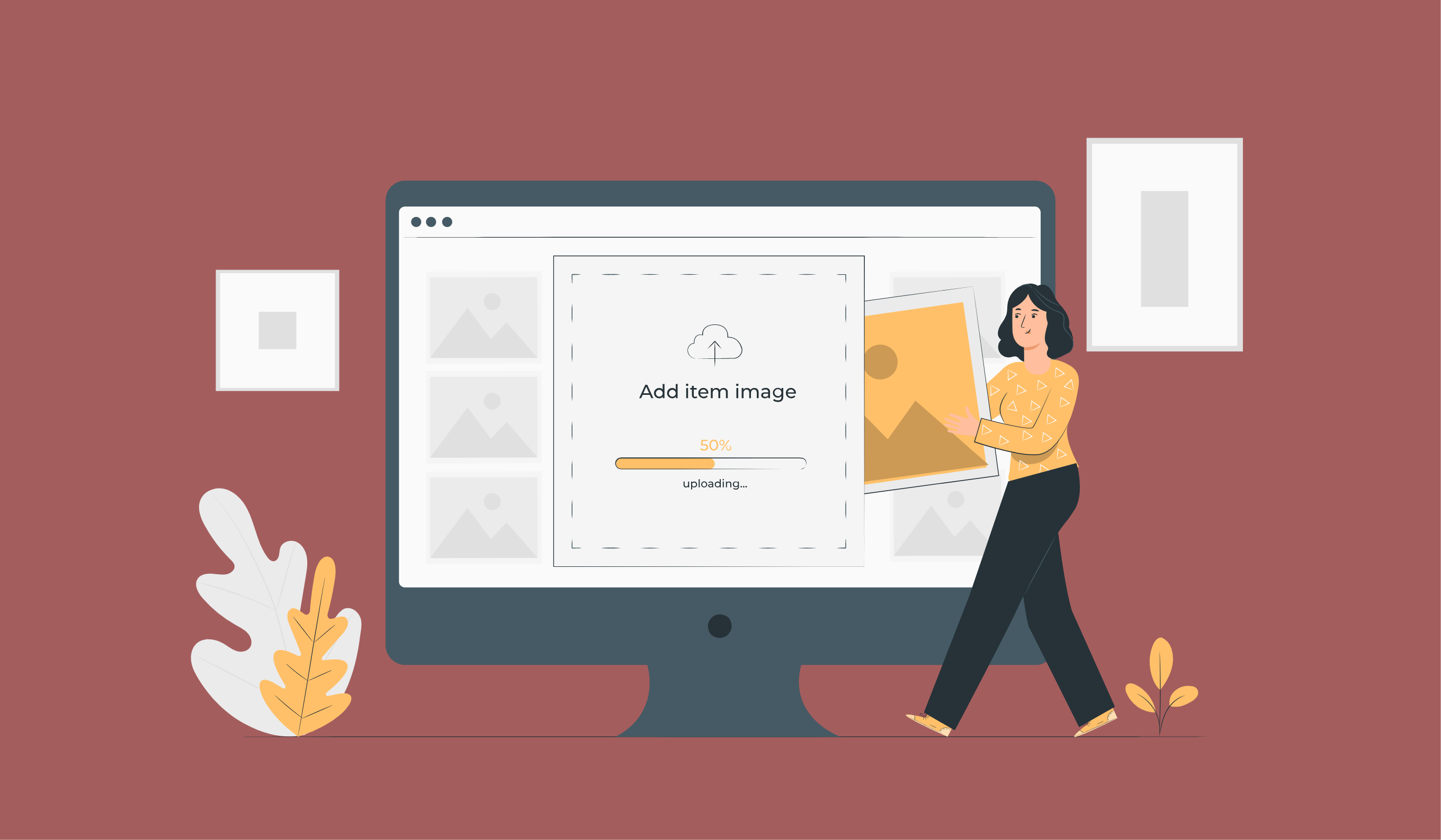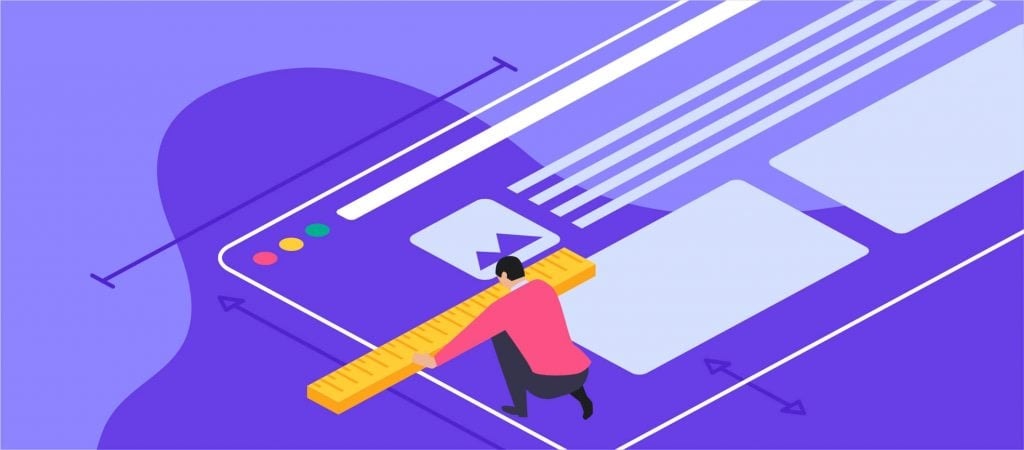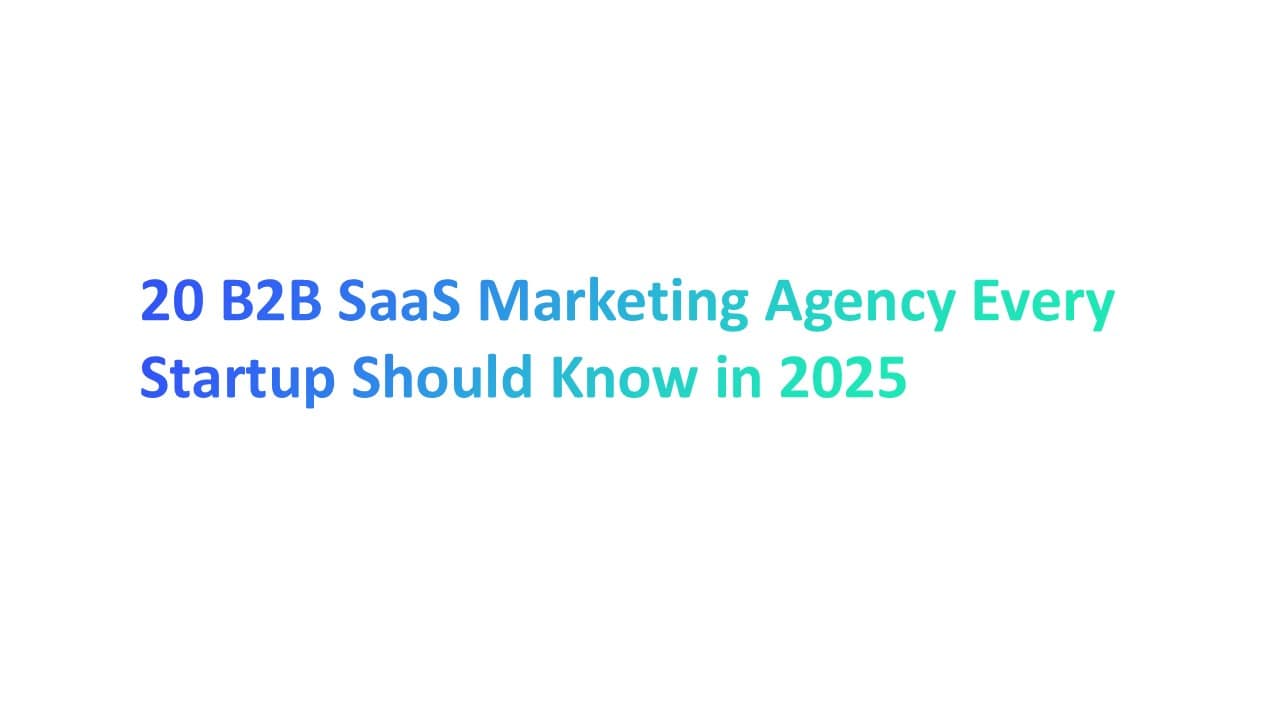Embedding images in emails isn’t just about aesthetics—it’s about impact. Did you know that emails with visuals have 42% higher click-through rates than plain-text ones?
Whether you're sending a marketing campaign or a personal message, embedding images effectively can make all the difference. But it’s not as simple as dragging and dropping.
Poorly optimized images can hurt deliverability, trigger spam filters, or fail on mobile devices. In this guide, you’ll learn best practices for embedding images seamlessly into your emails, ensuring they look great across devices and email clients.
What is an Embedded Image in An Email?

An embedded image in an email is a picture placed directly into the email body. It shows up automatically when the recipient opens the email, without needing to download a file or click a link.
Unlike attached files, embedded images feel more natural and make emails visually appealing. Embedding images prevents recipients from downloading the image separately, improving user experience.
Embedded images are used in newsletters, marketing emails, and even personal messages. They help convey your message clearly.
The Importance of Embedded Images in Emails
Embedded images make emails more impactful. Adding a photo to an email can personalize your message and make it more relatable.
For example, emails with images are 42% more likely to be read compared to plain-text emails. Practices to help avoid email deliverability issues include using optimized images and descriptive alt text
Embedded images also improve communication. They can help explain your message better, especially for product showcases, tutorials, or marketing campaigns.
However, it's crucial to test messages embed images correctly. Poorly optimized images can appear broken or fail to load, especially on mobile devices or if the recipient’s email client blocks images.
Best Practices for Embedding Images in Emails

Follow this guide to embedding images to create emails that load fast and look professional. Digital marketers and salespeople rely on embedded images to make their emails visually compelling.
Below are the best practices to help ensure successful embedding include using external hosting and responsive designs:
1. Use Optimized File Sizes
Large image files can slow down email loading times. This might annoy your reader and even cause them to ignore your message. To avoid this, reduce the file size of your images.
For example, a product image that is 500KB or smaller is ideal for most emails. Use tools like TinyPNG or Photoshop to compress images without losing quality. Always test how each platform displays the file to ensure consistent visuals across devices
2. Embed with Alt Text
Sometimes, email clients block images from loading. That’s where alt text comes in. Alt text is the description of the image that appears if the image doesn’t load.
For example, instead of showing a blank space, your email might display: “A blue running shoe available at 30% off.” This tells your reader what the image is about.
Adding alt text also helps people using screen readers and improves your email’s accessibility. It’s especially important for email clients like Gmail or Apple Mail. Plus, it makes your emails look professional and inclusive.
3. Select a Format
Choosing the right image format is crucial for emails. Different formats work better for different needs.
For example:
- Use JPEG for photos. It keeps the file size small without losing much quality.
- Choose PNG for logos or graphics that need a transparent background.
- For animations, go with GIFs. They add movement to your email.
Avoid uncommon formats like TIFF or BMP, as many email clients don’t support them.
4. Ensure Mobile Responsiveness
Did you know most people check emails on their mobile devices? That’s why your images must look good on smaller screens.
To achieve this:
- Use responsive design, which adjusts the image size based on the screen.
- Test your email on different devices to see how the images appear.
- Keep the width of your images under 600 pixels for better readability.
5. Avoid Image-Only Emails
Emails with only images might look nice, but they can create problems. Many email clients like Gmail or Apple Mail may block images by default.
Be aware of Google's image blocking feature, which can prevent embedded images from loading automatically. If your email is all images, the recipient might only see a blank screen.
Also, image-only emails are often flagged as spam. Avoid the spam filter by balancing text and images, and using alt text for all visuals.
Always include a clear message in text alongside your images. For example, if you're promoting a product, write a short description next to the product image.
6. Host Images Externally
Embedding large image files in your email can slow it down. Instead, host your images on a web server or a trusted hosting site. This means the image is stored online, and the email links to it using an absolute source link.
Absolute source links ensure images are fetched correctly from external servers into the email.
External hosting makes your email smaller and quicker to load. It also improves compatibility across mobile devices and different email clients. Linked images are hosted externally and fetched into the email when opened.
For example, many digital marketers use platforms like AWS or Google Cloud to host images. When hosting externally, always test your customer's email server to ensure the image displays properly in the recipient's inbox.
Test how your images appear across various email clients to ensure the prospect's email platform displays them correctly. Also, embedding images saves prospects from downloading large files or navigating to external links
7 Ways to Embed Images

1. Inline Embedding with Base64 Encoding
One effective way to embed images is by using inline embedding with Base64 encoding. Inline embedding with Base64 encoding means converting an image into text format. This text is added directly to your email code. It’s like putting the image inside the images in an email itself.
How to Use It:
- Convert your image into Base64 text using online tools or email design software.
- Insert this text into the HTML code of your email.
Key Notes:
- Replace the data:image/png;base64,... part with your Base64-encoded image string.
- Ensure the alt text describes the image for accessibility.
Benefits:
- The image will load immediately when the recipient opens the email.
- No need for external links or hosting sites.
2. Using CID (Content-ID) for Inline Images
CID embedding attaches an image as a separate file to the email. The email uses a Content-ID (CID) tag to display the image in a specific spot within the email body.
How to Use It:
- Attach the image to your email as a separate file.
- Add a reference to the image in your email’s HTML code using the CID tag.
Key Notes:
- In your email’s MIME (Multipurpose Internet Mail Extensions) settings, attach the image and assign it a Content-ID, like unique-image-id.
- Email clients will link the cid to the attached image and display it inline.
Benefits:
- Cid images works well with most email clients, like Gmail or Apple Mail.
- Great for marketing emails where image placement matters.
3. Drag-and-Drop Embedding
Drag-and-drop embedding is one of the simplest methods to add an image to an email. This method automatically embed and involves literally dragging the image file from your computer and dropping it into the email compose box.
Benefits:
- Quick and Easy: Perfect for people who don’t know coding.
- User-Friendly: Supported by most modern email clients.
- Ideal for Small Emails: Works well for personal or casual communication.
4. CSS Background Images
CSS background images are used to style emails. The image doesn’t appear as part of the content but as the background for specific sections of html emails.
How to Use It:
- Host the image on a web server or a trusted hosting site.
- Copy the image’s absolute source link (URL).
- Use the following HTML code in your email:
- <div style="background-image: url('https://example.com/image.jpg'); height: 200px; width: 300px;">
- <p style="color: white;">Your Text Here</p>
- </div>
Key Notes:
- Use the background-image property in the <style> attribute.
- Host the image externally and use its absolute source link.
Benefits:
- Creative Layouts: Great for designing headers or sections in promotional emails.
- Lightweight Emails: Keeps the email body smaller since the image is hosted externally.
- Mobile-Friendly: Ensures responsive design when combined with other CSS properties.
5. Embedding Images in Emails with HTML Tags
HTML tags are a simple way to add images directly into an email. This method uses the <img> html tag in the email’s code to display the image.
How to Use It:
- Host your image on a web server or a trusted hosting site like AWS or Google Cloud.
- Get the absolute source link (the full URL of the image).
- Use this HTML code: <img src="https://example.com/image.jpg" alt="Description of Image" width="600">
- Replace the src value with your image URL and adjust the width as needed.
Benefits:
- Easy to Implement: Requires only basic HTML knowledge.
- Universal Compatibility: Supported by most email clients like Gmail and Apple Mail.
- Customizable: Lets you control size and alignment.
6. SVG Embedding for Scalability
SVG (Scalable Vector Graphics) is a file format for images that scales without losing quality. This method is ideal for logos or icons that need to look sharp on all devices.
How to Use It:
- Save your graphic as an .svg file.
- Use this HTML code to embed it directly into your email:
- <svg width="200" height="200" xmlns="http://www.w3.org/2000/svg">
- <circle cx="100" cy="100" r="80" fill="blue" />
- </svg>
- You can also reference an external SVG file using the <img> tag:
- <img src="https://example.com/logo.svg" alt="Company Logo">
Benefits:
- High Quality: SVG images look sharp on all screen sizes, including mobile devices.
- Lightweight: Smaller file sizes compared to other image formats.
- Customizable: Easily change colors or shapes by editing the SVG code.
7. Animated GIF Embedding
Animated GIFs are images that show motion. They are great for grabbing attention and adding personality to your emails. GIFs can explain a process, highlight a product, or simply make your email more fun.
How to Use It:
- Create or download an animated GIF.
- Optimize the GIF file size to ensure it loads quickly. A size under 1MB is ideal.
- Host the GIF on a web server or upload it to your email editor.
- Use this HTML code to embed the GIF: <img src="https://example.com/animated.gif" alt="Fun Animated GIF" width="600">
Benefits:
- Engages Viewers: GIFs are eye-catching and can convey emotions or messages quickly.
- Simplifies Complex Ideas: Great for demonstrating steps or showcasing features.
- Mobile-Friendly: GIFs adapt well to smaller screens when properly sized.
Inline Images vs Separate File Attachments

What is Inline Images?
Inline images are visuals directly embedded in the email body. They appear naturally within the text and are visible immediately upon opening the email. This method enhances visual engagement and is ideal for storytelling or showcasing products.
What is Separate File Attachments?
Separate file attachments are files linked to the email but not displayed in the email body. Recipients must download them to view the content, which is more suited for formal reports or high-resolution files that need preservation.
Linked images or attachments should only be used when visuals are not central to your message.
Key Differences:
1. Ease of Viewing
- Inline Images: Display directly within the email, making content visually engaging and eliminating the need for extra clicks. Ideal for marketing emails and newsletters.
- Attachments: Instead of embedding images, some emails attach files when visuals are not crucial to the content. This can be less convenient and may discourage engagement.
2. Email Size
- Inline Images: Increase the overall email size, potentially causing slow load times or deliverability issues if too large.
- Attachments: Keep email body lighter but may lead to larger download sizes, especially with multiple or high-resolution files.
3. Compatibility and Accessibility
- Inline Images: Supported by most email clients but may not display properly if the recipient has image-blocking settings enabled.
- Attachments: Universally accessible, regardless of email client settings, as long as the recipient has the right software to open them.
4. Use Case Suitability
- Inline Images: Best for visual storytelling, product showcases, or branding, where images are integral to the message.
- Attachments: Better for formal documents, reports, or high-resolution images that need to be preserved for download.
5. Spam Triggers
- Inline Images: Excessive use may raise red flags with spam filters, especially if the email has a poor text-to-image ratio.
- Attachments: Can be flagged as spam or even malware, especially if the file type or sender is unfamiliar to the recipient.
6. Mobile User Experience
- Inline Images: Offer a seamless viewing experience on mobile devices, as images appear naturally within the email layout.
- Attachments: Require additional steps to download and open, which may deter mobile users due to limited storage or data concerns.
How to Choose the Right Format to Embed Images in Emails

1. Understand Your Image Purpose
Think about why you’re using the image.
- JPEG is best for photos or detailed visuals.
- PNG works well for sharp graphics or text.
- GIF is ideal for animations.
Each format serves a different purpose. For instance, if you're showcasing a product, JPEG might be your go-to format because it keeps file sizes small.
2. Prioritize File Size
Large image files can slow down your email’s load time.
- Compress your images before adding them to your email.
- Use tools like TinyPNG or ImageOptim to reduce file size.
- Aim for file sizes under 1MB for faster loading on mobile devices and email clients.
This ensures your email reaches the recipient’s inbox without delays.
3. Consider Transparency Needs
Some images need transparent backgrounds to blend well with your email design, so you might need a tool to remove the background.
- PNG supports transparency and is perfect for logos or icons.
- Avoid formats like JPEG, as they don’t allow transparency.
Transparent images make your emails look clean and professional, especially when using light or colored backgrounds.
4. Use SVG for Scalability
SVG stands for Scalable Vector Graphics. It’s a type of image format that can be resized without losing quality.
Why use it:
- Sharp at Any Size: SVG images remain clear no matter how big or small they appear.
- Lightweight: SVG files are smaller in size, so they load quickly.
- Ideal for Graphics: Best for icons, logos, or simple designs.
5. Avoid Uncommon Formats
- Not all email clients support every image format.
- Using unknown formats might make your images fail to display properly.
Which formats to avoid:
- TIFF: Too large and not supported by most email clients.
- BMP: Outdated and slow to load.
6. Optimize for Email Client Compatibility
It ensures your images display well across all email clients like Gmail, Outlook, and Apple Mail.
How to optimize:
- Test your images in different email clients before sending.
- Use universal formats like JPEG and PNG.
- Avoid images that rely on heavy HTML code or CSS.
- Always perform image validation to check how embedded images appear in various email clients.
7. Leverage Animated GIFs for Engagement
Animated GIFs are short, looping animations. They add movement to your email content and make it more engaging.
Why Use GIFs in Emails:
- Catch Attention: Movement grabs the reader's eye immediately.
- Showcase Products: Perfect for demonstrating features or showing multiple product angles.
- Lighthearted Communication: GIFs can make your email feel more friendly and fun.
Conclusion
Embedding an image in an email is not just about visuals—it’s about creating a meaningful connection with your audience. This complete guide to embedding will help you ensure images display correctly in every email client. Use the right formats, keep file sizes optimized, and ensure compatibility across email clients. By following these steps, you’ll create engaging emails with embedded images that stand out in the recipient’s inbox. Always test your emails to confirm they display as intended. Make your emails memorable!

.jpg)






